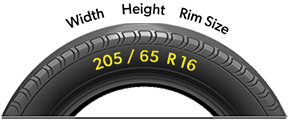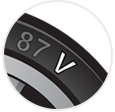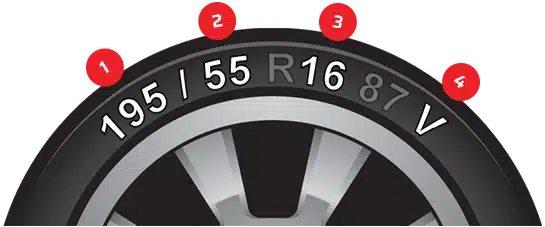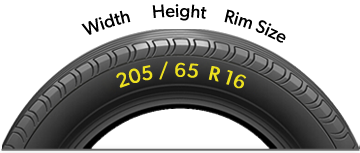Car Maintenance Schedule - How Often Should You Do It?
If you own a brand-new car or an old one, you must take proper care of it. Like all machines, your car also requires proper maintenance. The lack of adequate maintenance affects the performance of your vehicle and can reduce the durability of different components. Moreover, keeping a proper record of car maintenance can help increase your car’s resale value.
Many a time you would have seen a new car being sold for a considerably lower price. Often the reason is that the vehicle was not properly maintained, which damaged its critical components. Hence, the overall value of the car diminished significantly.
From a manufacturing point of view, many car manufacturers rely on the 30-60-90 rule. It means that specific components need to be changed at 30,000 miles. Others need to be replaced at 60,000 miles and some at 90,000 miles. However, some parts wear out at irregular intervals, making regular car maintenance necessary!
This article will guide car drivers on the car maintenance schedule that must be followed to keep their cars performing at the desired level and to increase its resale value.
Regular Maintenance
As part of the routine maintenance, changing your car's oil and oil filter is very important. During driving, the engine is exposed to a lot of unwanted materials. Tiny metal particles, dust, carbon get into the oil and wear out the engine quickly. Therefore, they needto be changed at regular intervals. Most oil and oil filters, last between 5,000 to 10,000 miles depending on their quality.
30,000 Miles
Before your car hits 30,000 miles, you will have to replace a few components which play a big role in your car’s performance.
One such component is the air filter. Air filter makes it easy for your engine to 'breathe'. In simpler words, it is responsible for a lot of things, one of which is to keep unwanted particles away from the engine. A clogged fuel filter will also negatively impact your fuel-efficiency. As part of your vehicle maintenance, the air filter must be changed anywhere between 15,000 to 30,000 miles.
In a very dusty environment, it is better to change the air filter at 15,000 miles to avoid unnecessary risk. Another component which must be replaced before 30,000 miles as a part of your scheduled maintenanceis the fuel filter. An improper fuel filter can make driving a woeful experience. Therefore, get it replaced at 30,000 miles for an optimal experience.
60,000 Miles
Once your vehicle completes 30,000 miles, you need to start keeping an eye on other components. The range between 30,000 miles to 60,000 miles will require you to change various parts.
One such thing is the battery. A typical battery will last between 50,000 to 60,000 miles. However, a battery can die out quicker, depending on temperature, non-use, and age. A battery will last four to five years, irrespective of how much it has been used.
Another thing which needs to be replaced are the brake rotors. The rotors wear out quickly due to the constant friction between them and the brake pads. There are two ways to approach the brake rotors. One is to get them replaced around 60,000 miles. Another way is to have their surface ground down. However, it can be done only once, and you will need to buy new rotors later.
The brake pads are next on the list. They are not designed to last a lifetime. However, a good quality set of brake pads will last up to 50,000 miles. You can easily realize its time to replace the brake pads as they will make a screeching noise when they are nearing the end of their life.
The next component on the vehicle maintenance schedule is the brake fluid. Brakes are a critical component of the car. Therefore, the brake fluid must not be ignored. The car manual contains information on when the fluid should be replaced. However, changing it anywhere between 20,000 to 45,000 miles is a perfect way to ensure performance and safety.
The coolant is another critical component of the car and needs to be replaced around 60,000 miles. However, ensure that the mechanic cleans the entire cooling area for the best impact. Coolant is a mix of water and anti-freeze which flows through the radiator to keep the car from heating.
The next part on the car maintenance checklist is the transmission fluid. The transmission fluid is responsible for keeping your transmission working in perfect order. Low levels of transmission fluid can burn up the transmission, which is very costly to repair/replace. Instead of a mileage marker, professionals recommend to keep checking the transmission fluid regularly.
If you drive a manual transmission, change the fluid between 30,000 to 60,000 miles. Automatic transmission fluid can last anywhere between 30,000 to well over 100,000 miles. Consulting the car manual or a professional is always a welcome step when it comes to changing the transmission fluid.
90,000 Miles
Once you cross the 60,000-mile barrier, other components will require to be replaced. One such component is the car's hoses. They carry coolant, and over time, the rubber starts to crack. Have them replaced as the vehicle is nearing 100,000 miles. Likewise, change the power steering fluid once the car nears 75,000 miles. Otherwise, you will have a hard time steering your car.
Once this is done, the next component on the vehicle maintenance checklist is replacing the spark plugs. High-quality spark plugs can last up to 100,000 miles. However, a lot of cheap spark plugs can last only 30,000 miles. Faulty spark plugs impact the car performance and can cause your car to hard start.
The last thing which needs to be checked is the car's timing belt. Some vehicles use a timing belt, while others use a timing chain. A faulty or broken timing belt can leave you stranded in the middle of the road. It must be replaced between 75,000 to 90,000 miles irrespective of the condition. A timing chain can last longer than 100,000 miles.























Conclusion
This sums up PitStopArabia’s guide to a proper car maintenance schedule. However, some components may need to be replaced quicker than the markers we have suggested above. The reason is that there are a lot of external factors which need to be considered. For example, driving habits, road conditions, overall weather, type of vehicle etc.
Therefore, one must keep checking these components at regular intervals to ensure the best experience. Personal experience and research indicate that a well-maintained vehicle can be resold at a far better value than a poorly maintained car. Therefore, keep a proper vehicle maintenance log. The log can be shown to prospective buyers and can be used to know when a component needs to be replaced.
Remember, these small investments not only increase your car’s resale value and performance, but they also ensure your safety. Therefore, instead of saving money, invest in the timely replacement of these parts.